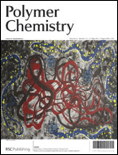
Polymer Chemistry
Scope & Guideline
Elevating Understanding in the World of Polymers
Introduction
Aims and Scopes
- Polymer Synthesis Techniques:
The journal covers various polymerization techniques, including controlled radical polymerization, ring-opening polymerization, and new methods such as photoinduced polymerization and organocatalysis. - Polymer Characterization:
Research articles frequently delve into the characterization of polymer structures and properties using advanced techniques such as NMR, GPC, and microscopy, ensuring a thorough understanding of polymer behavior. - Functional Polymers:
The journal emphasizes the design and synthesis of functional polymers with specific applications, including drug delivery systems, sensors, and smart materials that respond to environmental stimuli. - Biobased and Sustainable Polymers:
There is a significant focus on developing sustainable polymers derived from renewable resources, as well as methods for recycling and upcycling existing polymers. - Nanostructured and Composite Materials:
Research on polymer nanocomposites and the development of nanostructured materials is prominent, highlighting their enhanced properties and potential applications in various fields. - Advanced Applications:
The journal discusses the application of polymers in diverse fields such as biomedical engineering, environmental science, and electronics, showcasing their versatility and impact.
Trending and Emerging
- Sustainable and Biodegradable Polymers:
There is a rising trend in the development of sustainable and biodegradable polymers, driven by the need for environmentally friendly materials that reduce plastic waste. - Responsive and Smart Polymers:
The field is witnessing a surge in research on stimuli-responsive polymers that can adapt to environmental changes, such as temperature, pH, and light, for applications in drug delivery and smart materials. - Nanotechnology in Polymers:
The integration of nanotechnology in polymer science is increasingly prominent, with a focus on nanostructured materials that enhance mechanical, thermal, and optical properties. - Machine Learning and Computational Approaches:
The application of machine learning and computational modeling in polymer design and synthesis is gaining traction, allowing for more efficient exploration of polymer properties and behaviors. - Polymer Blends and Alloys:
Research into polymer blends and alloys is expanding, focusing on creating materials with tailored properties through the combination of different polymer types. - Advanced Characterization Techniques:
There is an increasing emphasis on utilizing advanced characterization techniques to better understand polymer structures and dynamics, particularly in complex systems.
Declining or Waning
- Traditional Bulk Polymerization Methods:
There has been a notable decrease in papers focusing on traditional bulk polymerization methods as researchers increasingly explore more innovative techniques such as RAFT and ATRP. - Conventional Thermoplastics:
The emphasis on conventional thermoplastics has waned, shifting towards biopolymers and functionalized materials that offer enhanced properties and sustainability. - Static Polymer Structures:
Research on static polymer structures, which do not incorporate dynamic or responsive elements, has become less frequent as the field moves towards more interactive and adaptive polymers.
Similar Journals

POLYMER SCIENCE SERIES C
Advancing the Frontiers of Polymer ResearchPOLYMER SCIENCE SERIES C is a distinguished journal published by MAIK NAUKA/INTERPERIODICA/SPRINGER, focusing on advancing research in the fields of polymer science and materials chemistry. With an ISSN of 1811-2382 and an E-ISSN of 1555-614X, this journal has been actively disseminating vital findings since its inception in 2000, aiming to converge knowledge and innovations until 2024. Operating out of the United States, it stands out with its current quartile rankings of Q3 across several categories, including Chemistry (miscellaneous), Materials Chemistry, and Polymers and Plastics, highlighting its evolving significance in the academic community. Despite its open access status, the journal attracts an engaged audience of researchers, professionals, and students, providing a platform for the publication of rigorous peer-reviewed articles that explore the intricacies of polymer synthesis, characterization, and applications. POLYMER SCIENCE SERIES C not only serves as a vital resource for keeping abreast of recent developments in polymer research but also stimulates interdisciplinary collaborations and innovative approaches in material science.
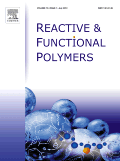
REACTIVE & FUNCTIONAL POLYMERS
Driving Innovation in Polymer Technologies and ApplicationsREACTIVE & FUNCTIONAL POLYMERS, published by Elsevier, is a leading journal in the field of polymer science, focusing on the innovative development and application of reactive and functional polymers. With an impressive impact demonstrated through its classification in various prestigious categories, including Q1 rankings in Chemical Engineering, Chemistry, and Materials Chemistry, this journal serves as an essential resource for researchers and professionals seeking to explore the latest advances in polymer research. With a broad scope that encompasses topics from biochemistry to environmental chemistry, and a convergence of significant findings from 1995 to 2024, REACTIVE & FUNCTIONAL POLYMERS fosters academic dialogue and collaboration among scientists. The journal also features Open Access options, ensuring that groundbreaking research is readily available to a global audience. By consistently publishing high-quality articles, it not only enriches the scientific community but also drives innovation across various industries reliant on polymer technologies.
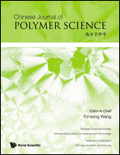
CHINESE JOURNAL OF POLYMER SCIENCE
Transforming Ideas into Polymer InnovationsThe CHINESE JOURNAL OF POLYMER SCIENCE, published by SPRINGER, stands as a premier periodical in the realm of polymer science, showcasing cutting-edge research and technological advancements since its inception in 1985. With an impressive impact factor reflecting its significance in the field, this journal is categorized in the top quartiles (Q1) of Chemical Engineering, Organic Chemistry, and Polymers and Plastics. It features a wide spectrum of innovative studies, thus serving as an essential resource for researchers, professionals, and students dedicated to understanding and advancing polymer-related technologies. The journal is indexed in Scopus, with notable rankings that highlight its influence in the disciplines of organic chemistry and materials science, making it a vital communication platform for authors around the globe aiming to disseminate impactful findings. Although not an open-access publication, the journal ensures robust accessibility through institutional subscriptions and partnerships, further emphasizing its commitment to the advancement of polymer science.

JOURNAL OF POLYMER SCIENCE
Transforming Ideas into Polymers: A Hub for Cutting-edge ResearchJOURNAL OF POLYMER SCIENCE, published by WILEY, is a premier, open-access journal dedicated to advancing the field of polymer science and its applications. With an ISSN of 2642-4150, it offers a platform for high-quality research and innovative ideas, contributing significantly to the understanding of polymaterials and their functionalities. The journal is recognized for its exceptional impact within various categories, consistently achieving Q1 rankings in Materials Chemistry, Physical and Theoretical Chemistry, and Polymers and Plastics, demonstrating its influential presence in the academic community. As of 2023, it holds a distinguished position in Scopus rankings, underscoring its relevance and rigorous peer-review process. By facilitating open access to vital research findings, the JOURNAL OF POLYMER SCIENCE plays a crucial role in fostering collaboration and knowledge transfer among researchers, professionals, and students, paving the way for innovative developments in polymer applications and materials science.
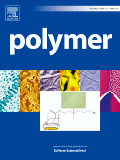
POLYMER
Fostering Excellence in Polymer ResearchPOLYMER, an esteemed journal published by Elsevier Science Ltd, stands at the forefront of polymer science, presenting cutting-edge research that encompasses the realms of Materials Chemistry, Organic Chemistry, and Polymers and Plastics. With a remarkable impact factor reflecting its significance in the academic community, POLYMER has been a vital resource since its inception in 1960, contributing to a converged body of knowledge through to 2024. Rated Q1 in all relevant categories as of 2023, and boasting impressive Scopus rankings, this journal not only facilitates advanced discussions in polymer synthesis, characterization, and applications but also serves as a critical platform for collaborative research among scholars, professionals, and students. While it offers content primarily via subscription, POLYMER remains dedicated to fostering innovation and excellence in the field, making it an essential read for anyone passionate about polymer science.
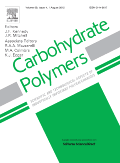
Carbohydrate Polymers
Exploring the synergy of chemistry and polymers.Carbohydrate Polymers is a prestigious academic journal, published by ELSEVIER SCI LTD, that plays a vital role in the field of materials chemistry, organic chemistry, and polymer science. With its Q1 category rankings in these domains, this journal serves as a critical platform for disseminating high-quality research, innovative methodologies, and significant advancements in carbohydrate-based polymers. Since its inception in 1981 and continuing until 2025, it has fostered critical discussions and collaborations among researchers, professionals, and students worldwide. Although it does not offer open access, its rigorous peer-review process ensures that only the most impactful studies are published. By highlighting new developments in the synthesis, characterization, and application of carbohydrate polymers, Carbohydrate Polymers consistently contributes to the enhancement of knowledge and technology within its field, making it an essential resource for anyone working at the intersection of chemistry and materials science.

ADVANCES IN POLYMER TECHNOLOGY
Connecting Knowledge with Cutting-Edge Solutions.ADVANCES IN POLYMER TECHNOLOGY is a premier open-access journal that has been at the forefront of innovation in the field of polymer science and engineering since its inception in 1981. Published by WILEY-HINDAWI, this journal serves as a vital platform for researchers, professionals, and students alike, facilitating the dissemination of cutting-edge research and applications in chemical engineering, organic chemistry, and polymers and plastics. With an impact factor that signifies its relevance and quality, the journal has achieved notable rankings, including Q2 in Chemical Engineering, and ranks within the top 30% of its category in multiple disciplines as of 2023. ADVANCES IN POLYMER TECHNOLOGY has embraced open-access publishing since 2019, ensuring that research findings are widely available to the global academic community. With its comprehensive coverage of topics related to polymer technology, this journal not only fosters scholarly exchange but also aims to bridge the gap between fundamental research and practical applications, thereby contributing significantly to advancements in materials science.
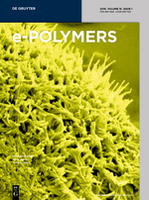
E-POLYMERS
Unlocking Knowledge in Polymers and Theoretical ChemistryE-Polymers, an esteemed journal published by De Gruyter Poland Sp. z o.o., serves as a vital platform for advancing knowledge in the fields of chemical engineering, polymer science, and theoretical chemistry. With its Open Access policy since 2019, researchers from around the globe can freely access and disseminate groundbreaking findings that span the convergence of diverse disciplines, making it an indispensable resource for both academia and industry. The journal is recognized for its significant impact, reflected in its Q2 ranking in Chemical Engineering, Physical and Theoretical Chemistry, and Polymers and Plastics categories in 2023. Its impressive Scopus rankings further solidify its position, showcasing a percentile rank of 70th and above across major categories. With a publication history extending from 2001 to 2024, E-Polymers continually addresses pressing challenges within the polymer research community, fostering innovation and collaboration among researchers, professionals, and students eager to contribute to the evolving landscape of materials science.
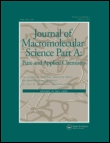
Journal of Macromolecular Science Part A-Pure and Applied Chemistry
Exploring Innovations in Polymers and CompositesWelcome to the Journal of Macromolecular Science Part A - Pure and Applied Chemistry, a distinguished publication dedicated to advancing the understanding of macromolecular science, encompassing critical areas such as polymers, materials chemistry, and composites. Published by Taylor & Francis Inc, this journal has firmly established its place within the scientific community, evident from its ranking in the Q2 and Q3 quartiles across various categories in the latest assessments, including Polymers and Plastics as well as Ceramics and Composites. With a commitment to providing high-quality peer-reviewed content, the journal aims to facilitate knowledge exchange and innovation among researchers and practitioners from around the globe. The absence of open access underscores the journal's commitment to maintaining rigorous editorial standards while remaining accessible to its readership. As the journal converges through valuable research contributions from 1992 to 2024, it continues to be a pivotal resource for professionals and students seeking to explore the latest advancements and applications in the field of macromolecular science.
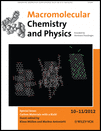
MACROMOLECULAR CHEMISTRY AND PHYSICS
Connecting Theoretical Insights with Practical ApplicationsMACROMOLECULAR CHEMISTRY AND PHYSICS, published by WILEY-V C H VERLAG GMBH, is a prominent journal dedicated to advancing the fields of condensed matter physics, materials chemistry, organic chemistry, physical and theoretical chemistry, and polymers and plastics. With an impressive H-index and a Q2 ranking in various relevant categories for 2023, this journal serves as a crucial platform for researchers and professionals to publish their innovative findings and theoretical advancements from 1994 to 2024. The journal's commitment to high-quality research is reflected in its Scopus rankings, which highlight its significant impact within the scientific community. Although it does not currently offer open access, it remains an essential resource for those seeking to explore the intricacies of macromolecular science. With a growing global audience, MACROMOLECULAR CHEMISTRY AND PHYSICS continues to shape the future of materials and polymer research, making it a must-read for students, researchers, and industry professionals alike.